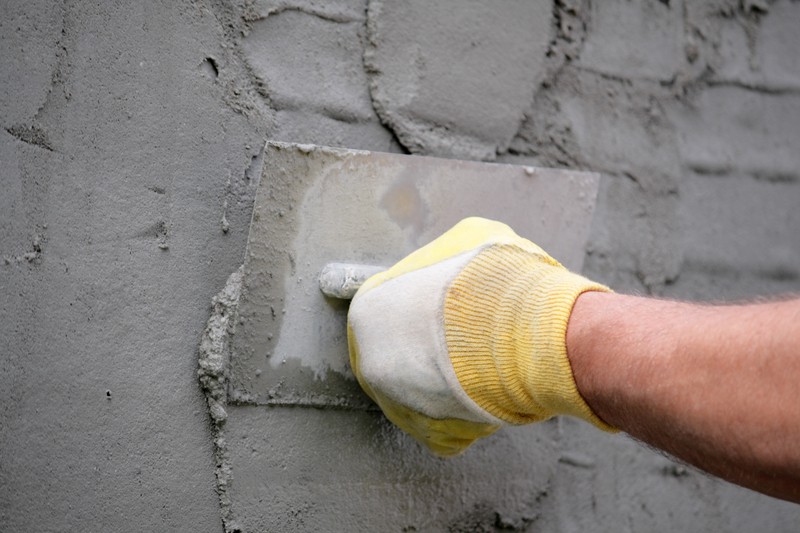To mix concrete plaster, the cement, with or without 10 % of lime, should be blended extensively with sand till the colour is uniform. The water is then included gradually while mixing proceeds and also up until the needed uniformity is acquired or till it is simply plastic enough to be spread and also to hold to the building wall. It has to be made use of within 45 mins of mixing and no plaster that has actually begun to set ought to be remixed with water as well as made use of.
To mix cement-lime plaster, the cement, lime and also sand may be mixed completely dry in the called for percentages, after that mixed damp with adequate water to provide the needed consistency. With this technique, the plaster needs to be used within 45 minutes of blending and no re-tempering of partially established plaster should be attempted. Much more typically, the lime as well as sand are blended with each other first, to form what is known as the ‘rugged stuff’, this allows for further hydration of the lime before making use of and makes it much easier to apply, a lot more plastic and quicker setup. With this technique mix 1 component of lime with 6 or 41/2 components of sand (depending upon whether the mix is to be 1:1:6 or 1:2:9), initial completely dry and after that with adequate water to give a tight mix, adding the water slowly. The mortar should after that be formed into a heap, covered with damp sacks as well as left for a week to 10 days. Immediately before usage, the crude things ought to be mixed with concrete, making use of 1 component cement to 6 or 9 components of rugged things, including water if needed to bring to a convenient uniformity, simply right for plastering a building. After the concrete is built the mortar has to be used up within 45 mins and also no re-tempering of partly established mortar must be attempted.
To blend lime plaster, mix 1 part of lime with 3 or 4 components sand, initial dry then with adequate water to make a stiff mix. Stack, cover over and maintain damp and also permit it to mature for 7 to 10 days. After that develop once more, adding water if required and also it is ready to use. Lime mortar, if kept damp may mean 3 or 4 weeks prior to utilizing. Often, around 10 % of concrete is included in the crude things to accelerate the setup, where case the mortar must be consumed within 45 minutes of blending.
 An additional method applicable to either concrete plaster or cement-lime plaster is to mix the lime with water to a thick cream as well as enable to represent 24 hours to seven days prior to combining with the sand. See Plasterers in Coventry
An additional method applicable to either concrete plaster or cement-lime plaster is to mix the lime with water to a thick cream as well as enable to represent 24 hours to seven days prior to combining with the sand. See Plasterers in Coventry
The structure surface area to be glued should be cleaned up cost-free from paint, oil, dirt, dust, and so on. As it is very tough to make plaster adhere to a very smooth surface, it is suggested on brick and also block building wall surfaces to rake out the joints about 1/2 in.
Thick cinder block must have a rough surface area, which is ideal gotten by wire brushing while they are still ‘environment-friendly’ and also the moulds need to be treated with whitewash rather than oil. Dense in-situ concrete ought to additionally be wire brushed while still ‘eco-friendly’, considering that, if allowed to harden, the area will most likely be so smooth that it will need to be hacked to give an adequate bond for the building plaster.
This is composed of a mix 1 part concrete to 1 1/2 parts of crude sand first combined completely dry and after that with sufficient water to give a fairly damp mix. This is rushed onto the structure wall in an unequal fashion, normally with a rugged brush, using a solid whipping movement at appropriate angles to the face of the structure wall surface.
New brick and concrete walls must be allowed a practical time to dry before plastering. When the wall has actually been prepared by cleansing, raking joints, roughening or given a ‘splatter-dash’ coat, it is ready for plastering.
If the structure wall surface is irregular as well as out of plumb as well as it is intended to have the finish plaster surface area a true aircraft, it is necessary to ‘make up’ or ‘dub out’ the reduced areas by succeeding making-up layers, each concerning 3/8 in. When the making-up layers have brought the structure wall to a sensible airplane surface the actual plaster coats could be used.


Be the first to comment on "Building Plastering – Mixing and Surface Preparation"